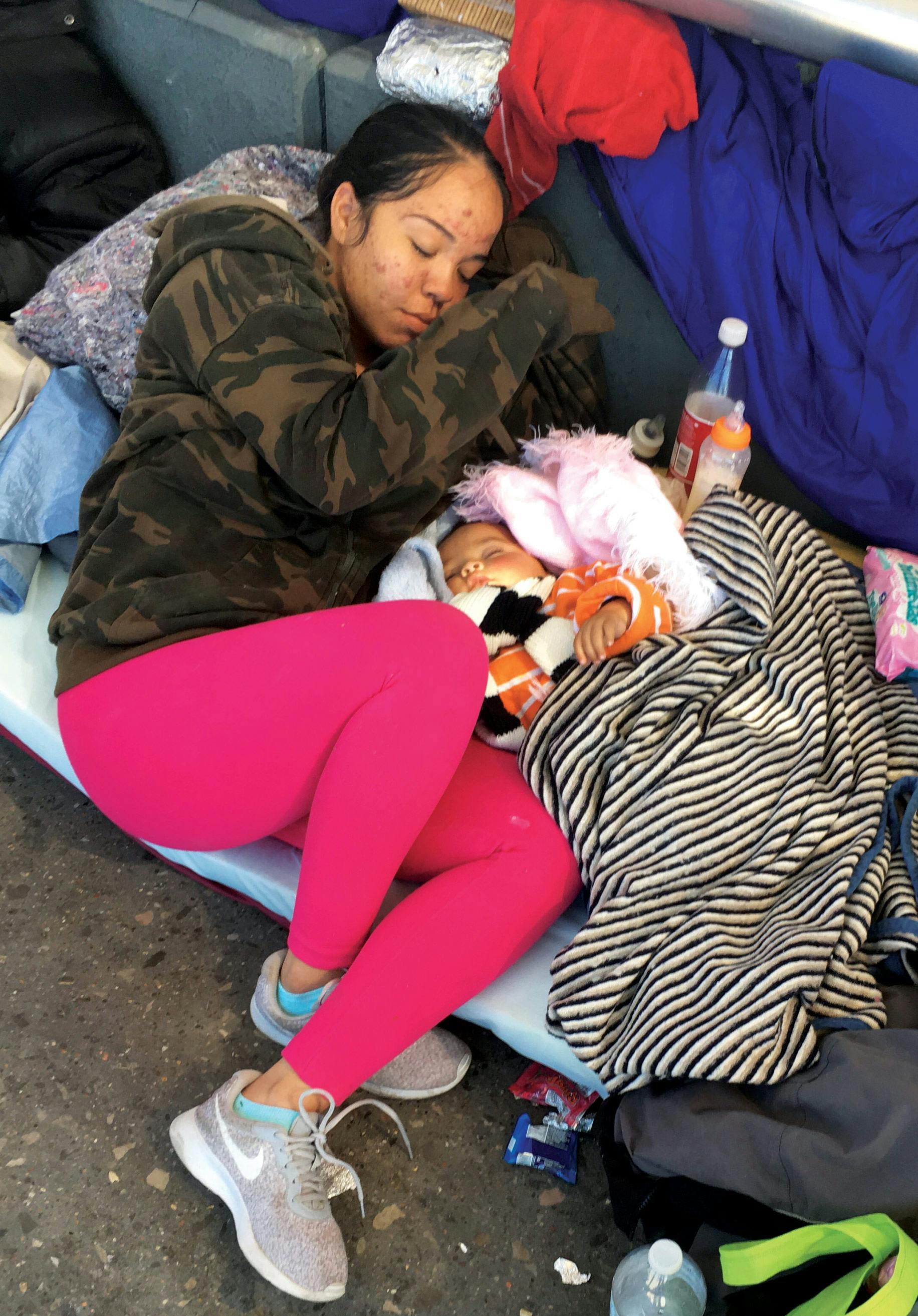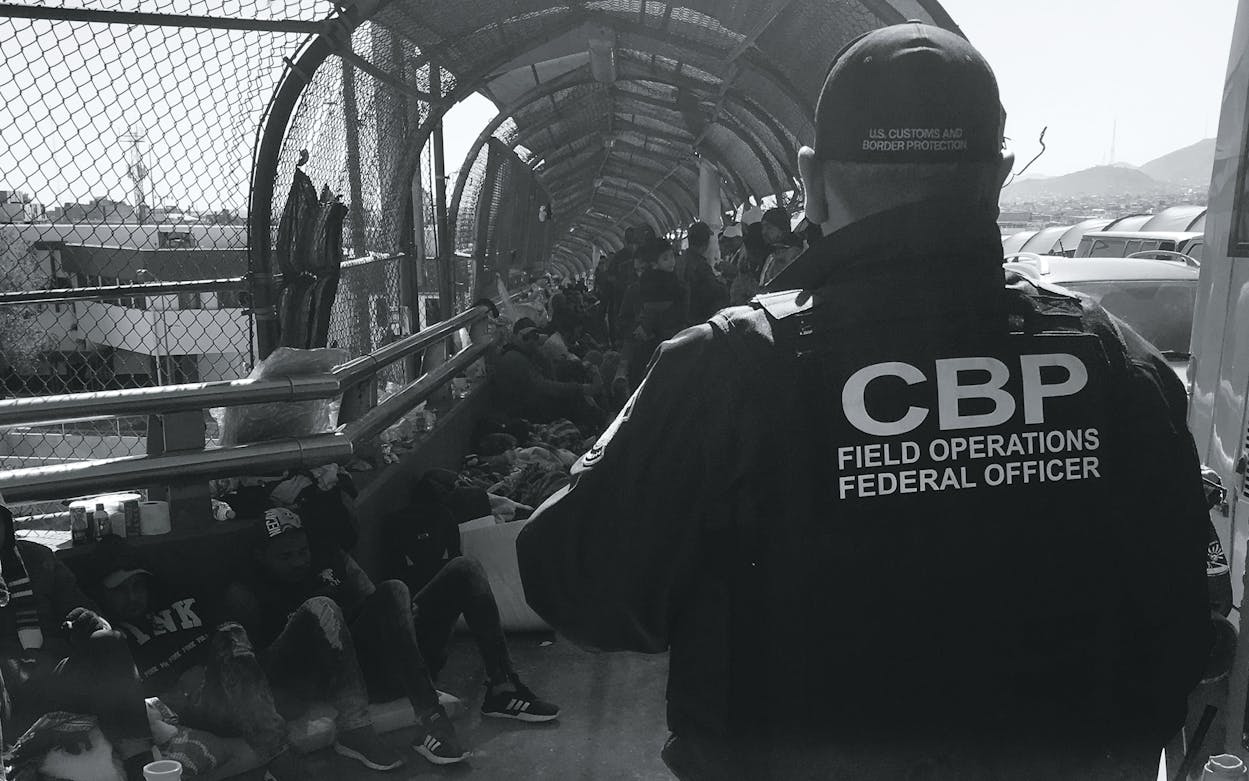Mexican immigration officials removed asylum seekers from the Paso del Norte Bridge linking El Paso and Ciudad Juárez Friday afternoon and took them to a shelter, according to Mexican media reports. There were no reports of violence. This bridge held the largest group of asylum seekers among the three bridges between the cities where migrants have camped out since October while waiting to be allowed to come to a U.S. port of entry to seek asylum. The status of the smaller groups on the other two bridges couldn’t immediately be determined.
The move by Mexican authorities comes a day after the Trump administration invoked national security powers to change existing rules to deny asylum to anyone entering this country illegally, U.S. immigrant rights advocates were told that U.S. and Mexican officials had agreed to a plan to evict migrants encamped on international bridges awaiting to legally apply for asylum.
U.S. and Mexican authorities have reached an agreement to remove hundreds of asylum seekers, including children, from international bridges linking El Paso and Ciudad Juarez, representatives from the American Civil Liberties Union told Texas Monthly Thursday night. Mexican officials are still working to identify shelter space for the migrants as they wait for permission to make their asylum claim in the United States.
More than 450 would-be asylum seekers—mostly from Central America—are currently camped out on the Mexican side of three bridges linking the two cities, said Shaw Drake, an attorney for the ACLU’s Border Rights Center in El Paso. Overnight temperatures are expected to dip to near freezing early next week. U.S. Customs and Border Protection officials reached an agreement with Mexican government officials and non-governmental agencies at a meeting on Thursday to begin removing the asylum seekers beginning next week, said Cynthia Pompa, the Border Rights Center office manager who has been in contact with the Mexican groups.
Roger Maier, a CBP spokesman, confirmed ongoing discussions with Mexican counterparts. “I can confirm a meeting with various Mexican officials and agencies. Those discussions are ongoing. Nothing firm to share at this time. And as stated earlier you might want to check with Mexico on the numbers waiting. Figures they shared with us were less than half the number you report.” Maier added that Mexico doesn’t need an agreement with U.S. officials to remove people from its side of the bridge.
Word of a decision to remove the asylum seekers from the bridge comes on the same day the Trump administration unveiled its plan to change asylum rules to prevent people caught entering the country illegally from applying for asylum. Only people who come to a port of entry to seek asylum will have their requests considered. The plan is expected to face immediate legal challenges.
While many immigrants wait on international bridges to enter a port of entry, many others opt to enter the United States illegally, then turn themselves into Border Patrol agents and seek asylum.


The lines at the El Paso-Ciudad Juarez bridges have formed because CBP officers are preventing people from reaching the port of entry to apply for asylum, saying the port facilities lack capacity to process the number of asylum seekers now arriving. What’s happening in El Paso shows the inconsistencies in the Trump administration’s asylum policies, Drake said. “They’re breaking U.S. and international law by turning people away at the same time their bosses in the administration are telling people to go to the ports of entry to seek asylum,” he said. Administration officials have denied their actions are illegal.
CBP has said in the past that it processes asylum seekers “as expeditiously as possible without negating the agency’s overall mission, or compromising the safety of individuals within our custody.”
Mexican groups are still trying to work out two key issues, Drake and Pompa said. They are trying to identify shelter space to house the hundreds of families coming into the area. Casa del Migrante, run by the Catholic Church, is the largest shelter in Ciudad Juarez but lacks the space to handle all the migrants now at the bridges, especially the large numbers of families. The other issue is who will manage the creation of a waiting list that is key to the plans to clear the bridge. People would sign up for the chance to apply for asylum, then be notified when it’s their turn. In Tijuana, a similar list is managed by the waiting asylum seekers. Drake said the average wait to be able to go to the San Diego port of entry is 45 days.
The plan calls for getting the asylum seekers to voluntarily agree with Mexican officials to put their names on the waiting list and go to a shelter. “I think it’s unlikely many will do that. They’re not going to trust it. We’ve documented some cases of parents whose children have acute medical needs. Some of them might want to go to someplace warm, but I don’t think most of the people at the bridges will want to go,” Drake said. It’s not clear what steps might be taken if the asylum seekers don’t voluntarily leave the bridges.
Large numbers of migrants, primarily from Central America, have been streaming to the El Paso-Ciudad Juarez border in recent weeks. Churches and other groups in El Paso have rapidly added shelter space to care for the asylum seekers after they are released. Most of the families stay in El Paso for a couple days before traveling to join family elsewhere in the United States while their asylum claims are decided.

CBP officers have been blocking asylum seekers from approaching border ports of entry since the spring. Although other border communities have seen instances of migrants sleeping on bridges while waiting to be allowed to apply for asylum, it hadn’t happened in El Paso-Ciudad Juarez until last month as the migrant flow surged rapidly.
Most of those camping at the bridges are families from Guatemala, Honduras and El Salvador. But others have come from Cuba, Venezuela, Mexico, Brazil, Russia and Uganda, Drake said. The Mexican asylum seekers present a unique issue in the bridge clearing plan because they would be returned to a government they claim is persecuting them. “We don’t know if there’s a carve out in this agreement for them. But you can’t return a Mexican asylum seeker to Mexico,” Drake said.
He said he’s met in recent days with people who have been waiting on the bridge for five days, and only made it about a third of the way up the bridge. One woman he interviewed in El Paso said she waited for five days on the bridge before being allowed to go the port of entry and make her asylum claim. She was then kept for five days in a holding cell at the port facility before being allowed to go free in El Paso, Drake said.
Pompa said CBP officials told the Mexican groups at Thursday’s meeting that they can process about fifteen to twenty asylum claims per day. She said it wasn’t clear if that was a total for all of the El Paso ports of entry, or an average for each of the three ports. Those low numbers are what’s driving the crisis, Drake said. “The administration sends people to the ports to apply for asylum. When people try to do that, they turn them away and make them wait in dangerous circumstances,” he said.
In another development in El Paso Thursday night, the Border Patrol announced that it would do a crowd control exercise on Friday as part of ongoing training for the possible arrival of a caravan of Central American migrants. It will take place in an area between the downtown bridge and a small neighborhood nearby. The exercise was originally scheduled for Election Day but was postponed after members of Congress and voting rights groups said it smacked of voter intimidation, a charge the Trump administration denied. The ACLU has asked the Justice Department to investigate the voter intimidation claims.
The media had been invited to cover the Election Day exercise, but a news release issued Thursday night said the media would be barred from Friday’s exercise because of unspecified “safety concerns.”
- More About:
- Donald Trump
- El Paso






